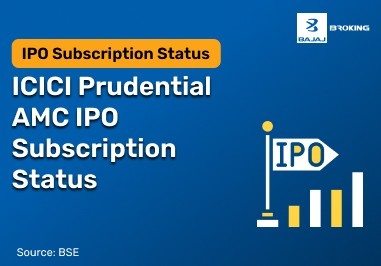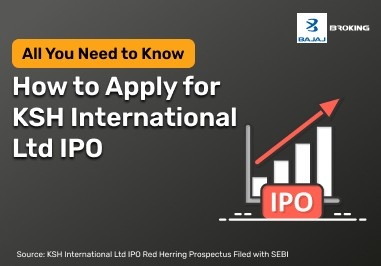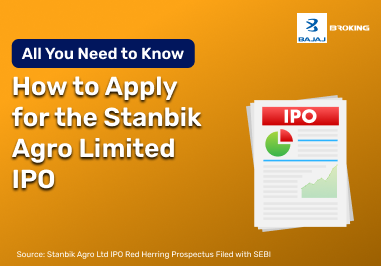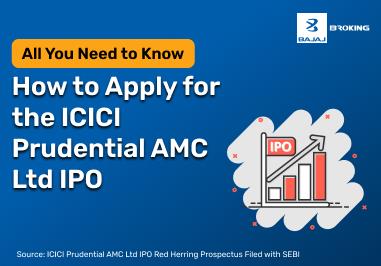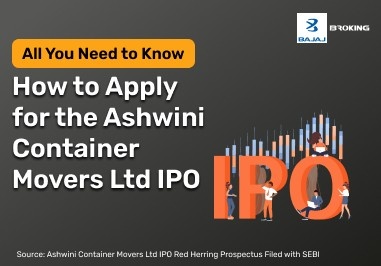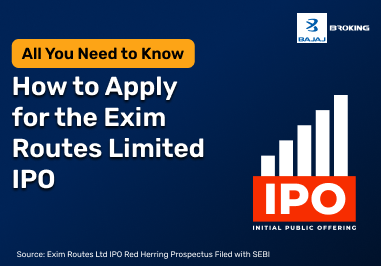What is a Moving Average?
A moving average (MA) is an indicator used in technical analysis. It gives you a constantly updated average stock price, so short-term market volatility and price action are smoothened out. So, even if the actual stock price rises and falls by small amounts over a period, you can assess the overall direction of price movements using a moving average indicator. This is because the indicator eliminates all the noise from the price charts, giving you clear insights into the primary price trend.
Additional Read: What is a 30-Day Moving Average?
How Does a Moving Average Work?
While there are different types of moving averages, let us take the most basic version of this indicator to understand how MAs work. Let’s say the average price of a stock over the past 30 days is Rs. 545. The simple moving average would then be computed as Rs. 18.16 (i.e. Rs. 545 ÷ 30 days).
Then, on day 31, the price of day 1 will be dropped from the value set and the price of the stock on day 31 will be included instead. This will still leave you with 30 data points, but the average ‘moves’ on to the next 30-day period instead. In this way, for every 30-day period, the moving average is calculated and charted, thereby giving you a clear picture of how the average price has changed historically.
Types of Moving Averages
Depending on the manner in which a moving average is calculated or the period for which it is computed, there are different types of moving averages. Here is a closer look at the most common types of MAs used in technical analysis for intraday trading.
Simple Moving Average (SMA)
A simple moving average is what we saw in the above-mentioned example. It is the arithmetic mean of the data points over a given period. The prices or data points over the given period are added together and then divided by the number of data points. Since it uses historical prices, it is a lagging indicator.
Formula: Simple Moving Average = (P1 + P2 + … + Pn) ÷ n
Here, P is the price and n is the number of time periods over which the data is gathered.
Exponential Moving Average (EMA)
The exponential moving average gives more priority to recent data or price points, thereby making it more responsive to new information than the SMA. It is computed using the following formula:
Formula: Current EMA = [Closing Price of the Stock – EMA (Previous Time Period)] × Multiplier + EMA (Previous Time Period)
Double Exponential Moving Average (DEMA)
The double exponential moving average builds on the concept of the EMA, but it is more effective at smoothing out volatile price movements and reducing the lag typically associated with the exponential moving average.
Formula: DEMA = 2 × EMAn – EMA of EMAn
Here, EMAn is the EMA for the lookback period or the duration over which you are computing the DEMA.
Triple Exponential Moving Average (TEMA)
The triple exponential moving average reduces lag and clarifies price action more effectively than the DEMA.
Formula: TEMA = (3 × EMA1) – (3 × EMA2) + EMA3
Here, EMA1 is the primary exponential moving average, EMA2 is the EMA of EMA1, and EMA3 is the EMA of EMA2.
Weighted Moving Average (WMA)
To compute the weighted moving average, each price point is multiplied by a weighting factor. The weighting factor is higher for recent data points and lower for older information. So, like the EMA, the WMA is also highly responsive to recent or new information.
Moving Averages: Comparative Analysis
Aspect
| Simple Moving Average (SMA)
| Exponential Moving Average (EMA)
| Weighted Moving Average (WMA)
|
Calculation Method
| Arithmetic mean of past prices
| Exponential weighting gives more importance to recent prices
| Assigned weights to each data point based on relevance
|
Sensitivity to Changes
| Lower, as all data points are equally weighted
| Higher, responds more quickly to recent price changes
| Variable, as weights can be adjusted to emphasise certain periods
|
Use Cases
| Identifying long-term trends
| Capturing short-term price movements
| Analysing specific timeframes with custom weighting
|
Lag Effect
| Higher due to equal weighting of all periods
| Lower, as recent prices have a greater impact
| Moderate, depending on assigned weights
|
Suitability for Intraday Trading
| Less preferred due to slower responsiveness
| Frequently used for quick decision-making
| Used in specific cases requiring custom analysis
|
Which Moving Average is the Best for Intraday Trading?
All of the different types of moving averages outlined above can be used as intraday moving averages. That said, there are some MA strategies that are highly effective for intraday trading. Let’s take a closer look at some of the best intraday moving average strategies.
The 5-8-13 Moving Average Strategy
This strategy involves using the simple moving averages for 5, 8 and 13 periods. Typically, in the case of intraday trading, the period is measured in terms of minutes since you will be closing your positions within the same trading day itself. If you are a beginner to intraday trading, you will need to gain some experience in interpreting the 5, 8 and 13-period moving averages. By analysing the differences or similarities between these three metrics, you can get a clear picture of how the prices may move within the next few minutes, and then take trading positions accordingly.
The Golden Cross
The golden cross is a technical indicator that makes use of a short-term and long-term moving average. Typically, this set includes a 50-period and a 200-period MA. If the 50 MA line for a stock cuts across its 200 MA line from below and rises steeply thereafter, it indicates that the stock price is rising quickly in the current market.
The Death Cross
The death cross is the opposite of the golden cross, and it is indicative of a strong bearish sentiment for the stock price. It can be identified on the chart if the 50 MA line cuts across the 200 MA line from above and declines steeply thereafter. This essentially means that in the more recent data periods, the stock’s price is falling rapidly.
The 20 EMA Strategy
[Please provide the description for this strategy to complete this section.]
A 20 EMA is computed over the last 20 periods or candles. In intraday trading, each candle could pertain to 1-minute, 5-minute or 15-minute time periods. Experts suggest that using 15-minute EMA is most effective for intraday trades that are carried out during periods of high market volatility.
To interpret the 20 EMA, you need to compare it with the prevailing stock price. If the stock price is below the 20 EMA, it signals a possible downtrend. But if the stock price is above the 20 EMA, it signals a possible uptrend. You can combine this moving average indicator with other technical indicators to confirm a trend and enter or exit a position accordingly.
Additional Read: What Is Moving Average Convergence Divergence – MACD?
How to Use Moving Averages for Intraday?
To effectively utilise moving averages in intraday trading, traders can begin by identifying the trend direction through the slope of the moving average, which helps determine whether the market is in an uptrend or downtrend. Moving averages also play a key role in generating trading signals, as price crossovers with the moving average can indicate potential entry or exit points. Additionally, they can act as dynamic support and resistance levels, assisting traders in setting appropriate stop-loss and take-profit levels. To improve accuracy and minimise false signals, moving averages should be combined with other technical indicators, ensuring a more comprehensive approach to intraday trading strategies.
Pros & Cons of Moving Averages in Intraday
Moving averages offer several advantages in intraday trading, primarily by simplifying price data, making it easier for traders to identify trends and potential trade opportunities. They help in determining support and resistance levels, which can be useful for setting stop-loss and take-profit points. However, moving averages also have limitations. As lagging indicators, they rely on historical price data, which means they may not always reflect sudden market changes. In highly volatile conditions, moving averages can generate false signals, leading to potential losses. Since they do not predict future price movements, traders should use them in combination with other technical indicators for a well-rounded strategy.
Pros
| Cons
|
Simplifies price data
| Lagging indicator
|
Helps identify trends
| May provide false signals in volatile markets
|
Assists in determining support and resistance
| Not predictive; relies on historical data
|
Conclusion
This sums up what a moving average is and which moving average is the best for intraday trading. You can make use of the moving average trading strategies outlined above to make more successful intraday trades. However, keep in mind that moving averages can also be used for other short-term trading techniques like range trading, swing trading and momentum trading. If you want to enter more long-term positions instead, you can make use of fundamental analysis and the metrics it covers, like financial ratios and more. To start implementing these strategies, download the Bajaj Broking app for seamless intraday trading experiences.

